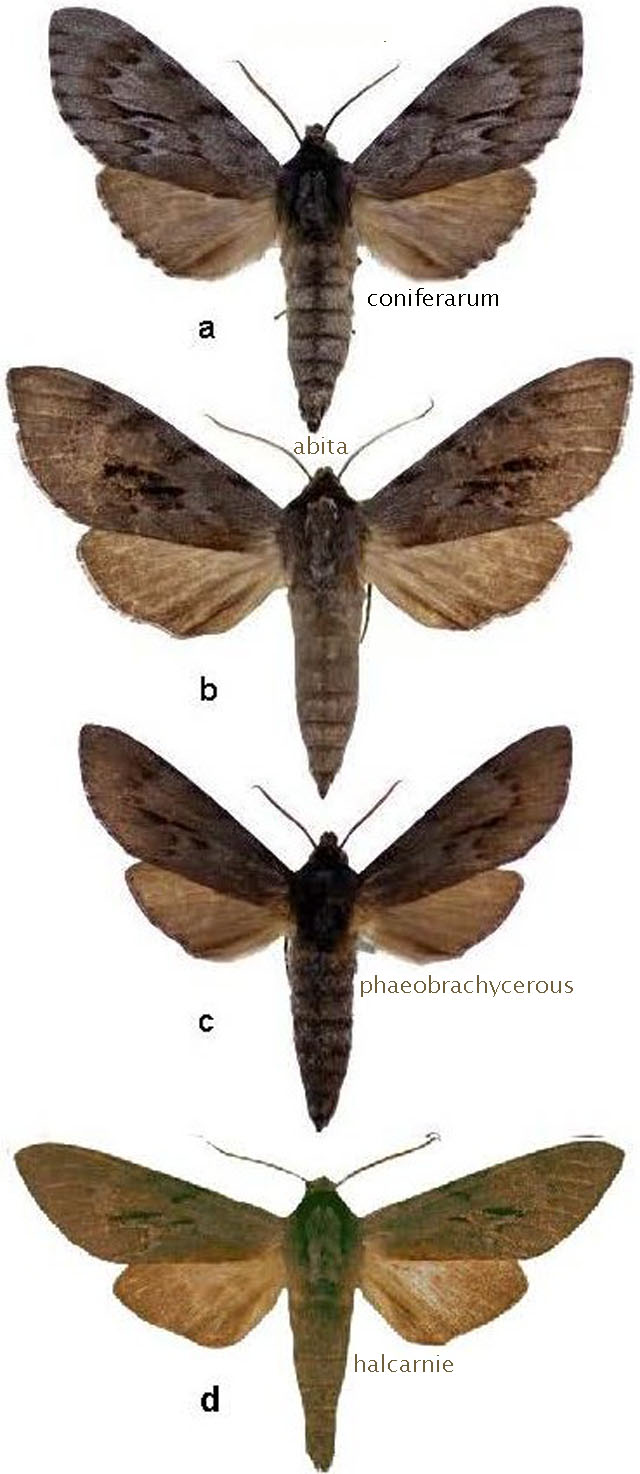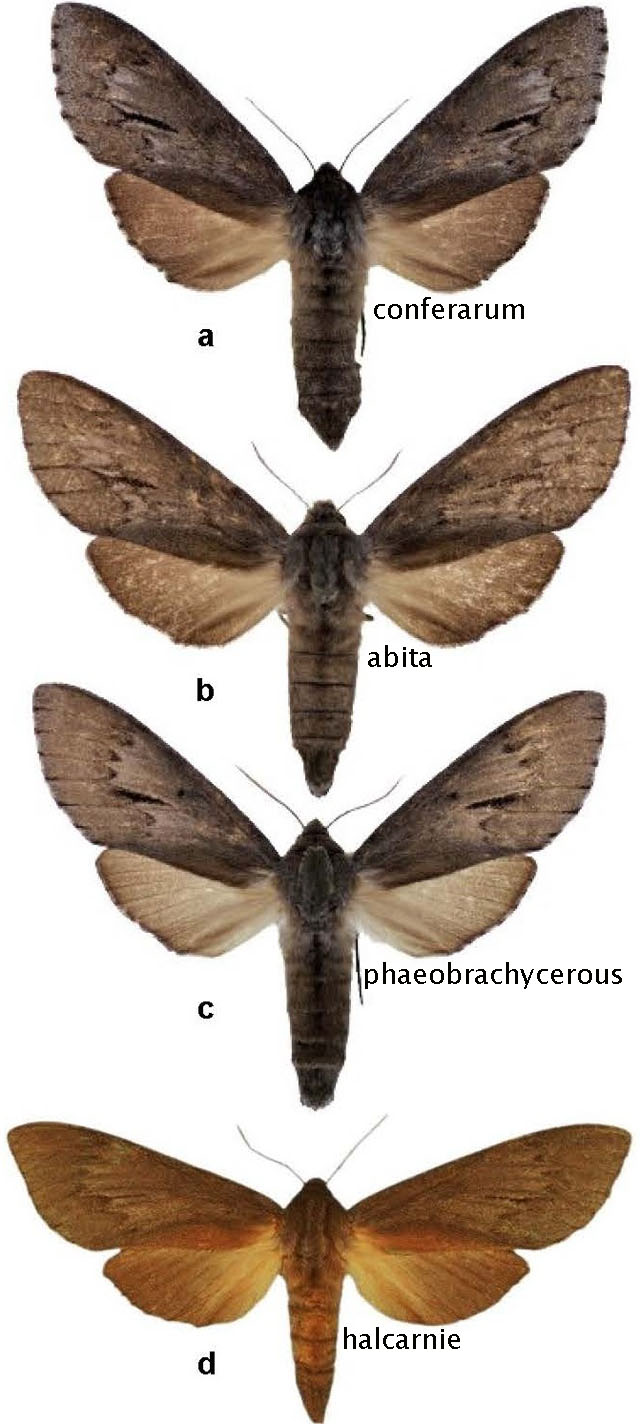Lapara abita
Brou & Brou 2024

Lapara males

"Lapara abita: wings, head, thorax and abdomen exhibit less gray and more brown colored scales than that found on distinctly gray colored L. coniferarum". The deeply-serrated sinuous post medial forewing lines most often found on L. coniferarum are entirely washed out to non-existent on L. abita, and so are the basal lines and antemedial lines of the forewings. In Louisiana, the postcellular longitudinal dashes of the forewings of L. abita are most often two or occasionally three in number, usually one or two in number on L. coniferarum, and usually one, occasionally two on L. phaeobrachycerous". (VABrou)
"Riotte (1972) reported the lengths of forewings of L. halicarnie in males to be (29-36 mm, n = 13), in females (32-40 mm, n = 6).
Brou (1994) reported the lengths of forewings of L. phaeobrachycerous in males (X = 27.35 mm, 25-31.5, n = 40), in females (X = 31.6 mm, 29.5-35.5, n = 14).
In this new species description we report the lengths of forewings of L. abita in males (X = 31.1 mm, 30.5-32.6 mm, n = 5), in females (X =33.1 mm, 32-35 mm, n = 6).
Brou (1994) reported the lengths of forewings of L. coniferarumin males (X = 29.25 mm, 27.5-31.5, n =40), in females (X = 31.1 mm, 29.5-35, n = 23). (VABrou)"

"Both sexes of Lapara abita sp. n., display dorsal wing colors of gray-brown on forewings and brown on hindwings, unlike both of the described gray-colored Lapara species." (VABrou)
Larvae probably feed upon various pine species, including loblolly pine (Pinus taeda) and longleaf pine (Pinus pinaster).
Larvae will likely pupate under paper towels (no soil medium needed) in a dark bucket.
The moth is given it species name indicating a specimen type locale in Abita Springs. Return to Sphingini Tribe
Return to Sphingidae Index